This post contains affiliate links. I only recommend services/products that I use and love. Please read my disclosure for more info.
Lisbon is one of the best destinations for an easy, affordable, and fun European vacation. Known as the City of Seven Hills (one of many), the capital city of Portugal gets far less attention than it deserves.
Lisbon is a great place to explore as it is full of history and culture. The people are warm and friendly and it is very easy to get around the city. Here is a breakdown of our 5 day stay in Lisbon. If you are wondering what to see and do in Lisbon, feel free to use this as a travel guide to plan your trip!
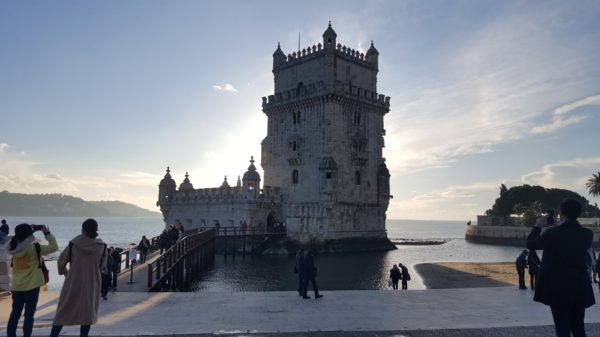
Getting There
You can definitely find reasonably priced nonstop flights to Lisbon. However, we wanted to stop in Dublin to visit family in Ireland, so we flew on Aer Lingus from JFK to Dublin then Dublin to Lisbon. We used our Southwest Rapid Reward points to fly from Atlanta to JFK, New York.
Where to Stay
We stayed at the Holiday Inn – Lisbon on Av. Antonio Jose de Almeida. This was the ideal location because it is very central and close to all the sights we wanted to visit. It is also a 15 minute drive from the airport. The hotel is walking distance to the Marques de Pombal metro station and several bus stops. This made getting around in Lisbon extremely easy. The neighborhood itself was quite charming and close to many restaurants and stores.
The Holiday Inn-Lisbon is quite modern and comfortable. It is safe, clean, and serves free breakfast each morning. The staff was always very helpful. All this on top of being in the perfect location made for a wonderful stay in Lisbon. We will stay here again the next time we visit.
Even if you don’t stay at the Holiday Inn-Lisbon, you should definitely find accommodation within or near this area. Make sure your accommodation is within walking distance to a metro station (on the blue line). It will make getting around so much easier.
Where to Eat
Lisbon is known for its seafood, especially its national dish – bacalhau: Portuguese for cod fish. Bacalhau is cooked in a variety of ways and you can get it pretty much anywhere you go. Another must-eat item is the pastel de nata, a yummy custard tart/pastry. The best place to get your pastel de nata is Pasteis de Belem.
Other recommended restaurants are Belcanto and 100 Maneiras for fine dining (both are in the Chiado district), O Forcado for dinner and fado (Bairro Alto district), and Luzzo Pizzaria (Avenida da Liberdade) and La Follia de Belem (Belem) for amazing pizza. Make sure you try the Portuguese liquor – Ginjinha.
Getting Around
The best way to see Lisbon is on foot. You definitely need to bring comfortable shoes because you will be doing a lot of walking, especially uphill. The best way to get around in Lisbon is by the Metro. Lisbon has a very efficient public transportation system and the metro/train can get you from point A to point B in a matter of minutes. We also used the bus to go to Belem. We took an Uber to and from the airport and to Sintra simply for convenience, but if you prefer, taking the train is totally doable for both.
The metro is pretty easy. Once you use it a couple of times you will be a pro. Just keep one of these Lisbon Metro Maps handy so you can get an idea of the network and plan your trip accordingly. Most of the sights we visited are on the blue line.
We used the Lisboa card since we relied heavily on public transport. The Lisboa card gives you access to Lisbon’s public transportation (train/bus etc.) and also provides discounts for certain attractions.
Finally, I do not recommend renting a car in Lisbon. You don’t need it (think New York City). Plus driving a car means getting stuck in the crazy traffic. Why deal with all that? Just get the Lisboa card and use the metro. It really will save time and money. If you want to rent a car to drive to other parts of Portugal, try Auto Europe Car Rentals.
Language
Portuguese is the official language, but almost everyone we met spoke English. For the few that didn’t speak English, we communicated just fine with my broken Spanish (slightly similar but definitely not the same as Portuguese) and their broken English. That said, we learned a few Portuguese words before we went.
Day 1: Alfama and Graca Districts
We had a late start on our first day since we were still suffering from jet lag (we flew into Lisbon the night before). We rested up in the morning then started our adventure. We walked to the Marques de Pombal train station and took the blue line train to the Santa Apolonia station. Once we arrived at Santa Apolonia, we started walking towards the Alfama district. The river is on one side so there is really only one way to go, but if in doubt, ask someone to point you in the right direction.
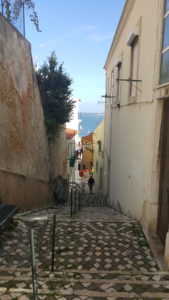

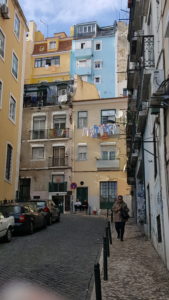
We stopped at a hole in the wall restaurant on our way to grab some lunch. This restaurant didn’t have a name, it just said Portuguese Cuisine (or maybe that was really its name). We of course had to try Portugal’s popular bacalhau. This particular dish was tasty!
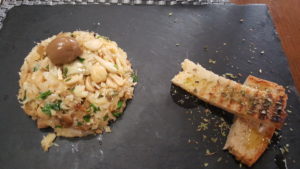
After grabbing a quick bite, we continued walking through the Alafama district. Remember Lisbon is known as the City Seven Hills so be prepared to walk uphill.
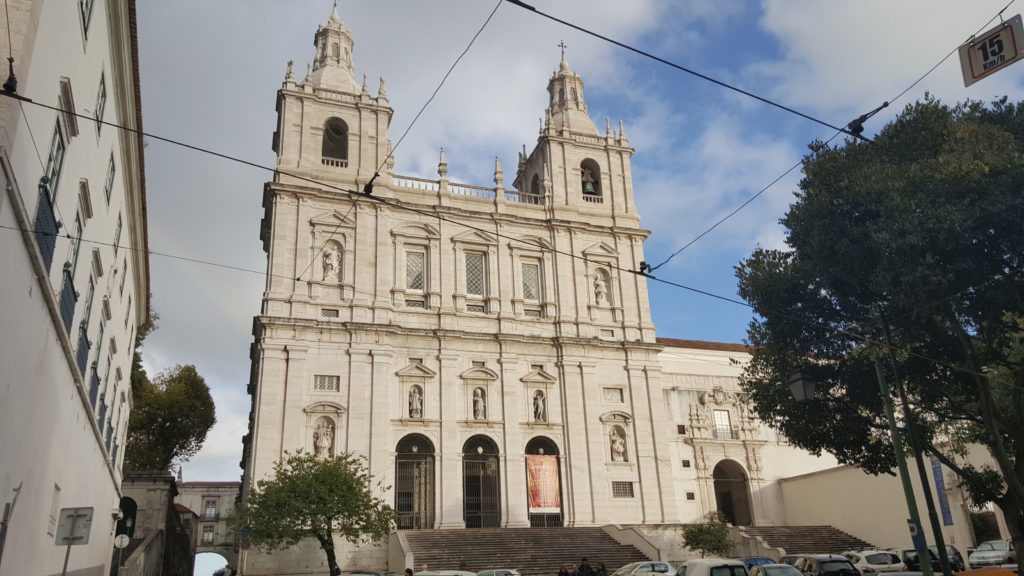
We walked all the way to the Graca district and ventured up the hill to the Miradouro da Graca.

Walking to Miradouro da Graca is a must! You get the most amazing views of the Alfama district and the rest of Lisbon from this lookout area. We made it just in time to see the sun set.
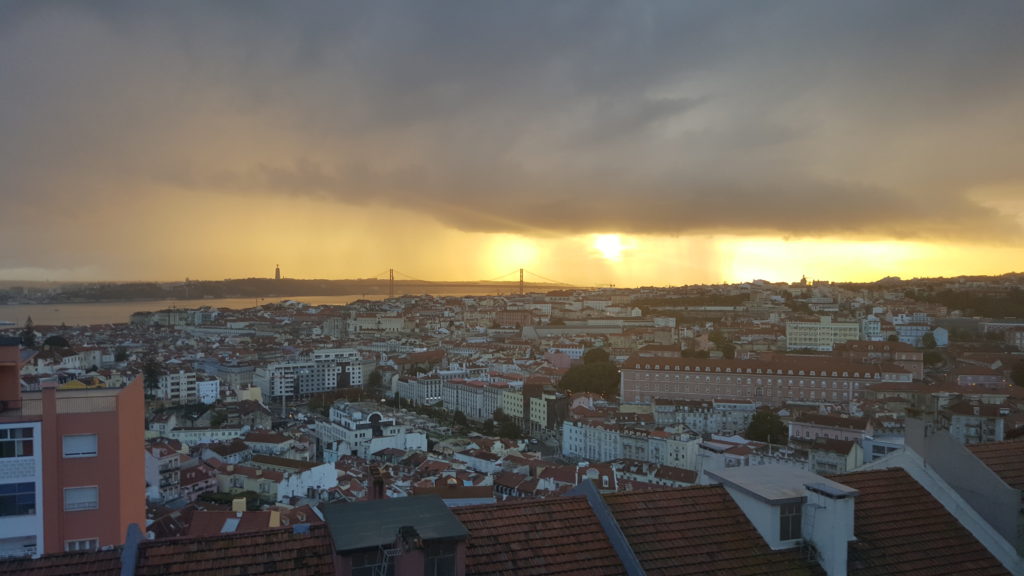
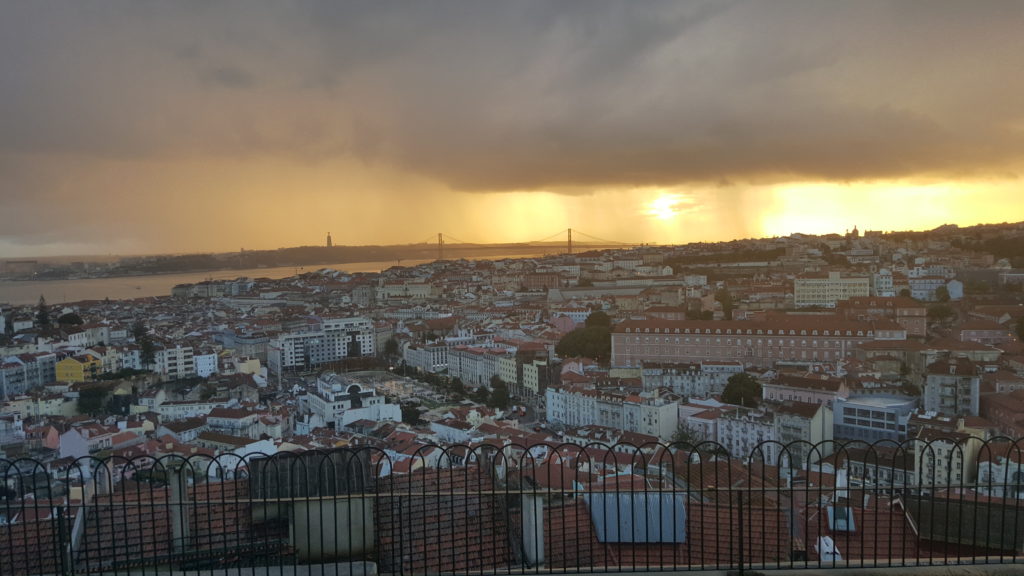
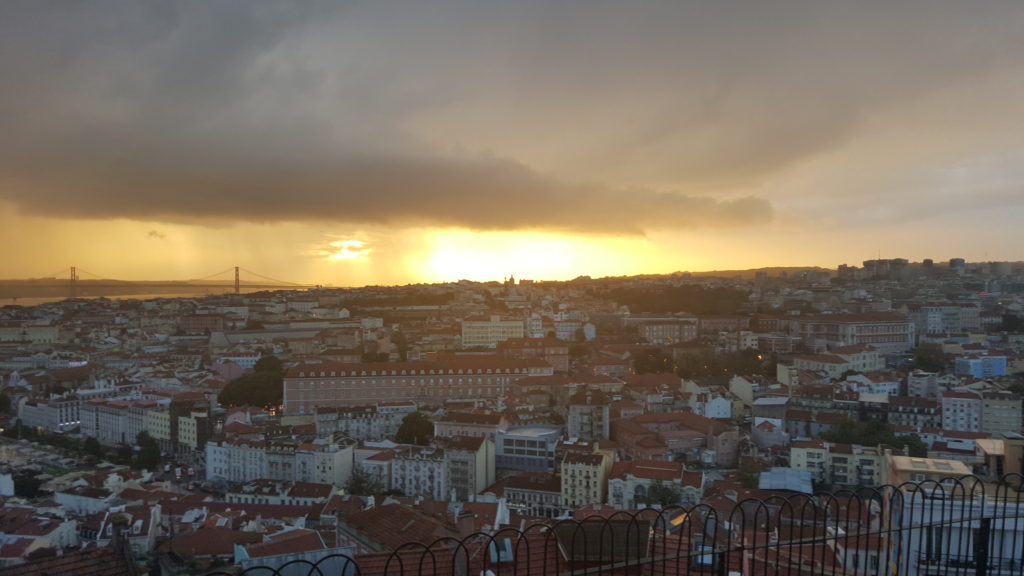

There is a quaint little church on top of the hill as well.
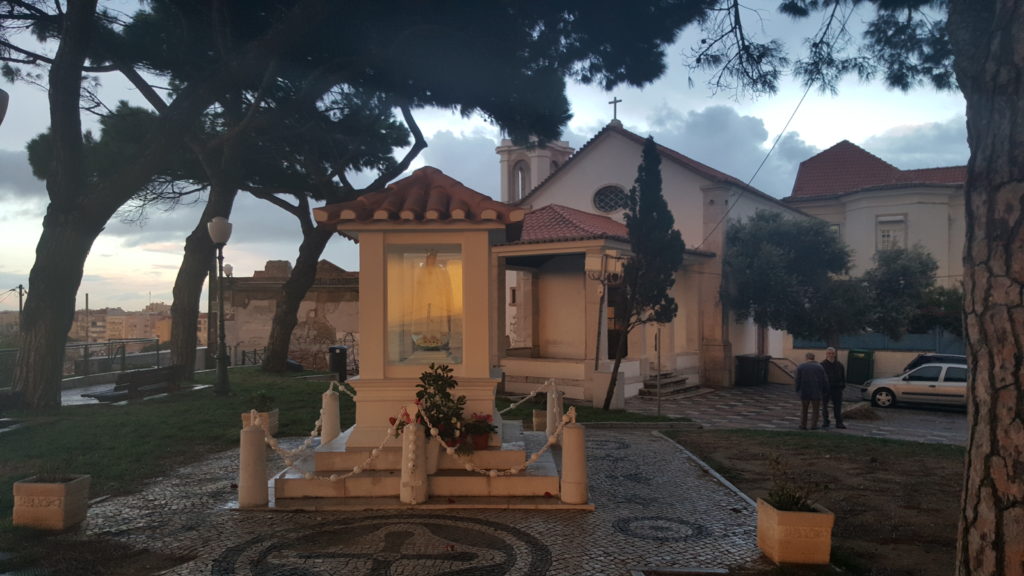
We had a spectacular view of St. George’s Castle (Castelo da Jorge). If you have time, you should visit this castle and take in its history and views. St. George’s castle is open from 9:00 a.m. to 9:00 p.m. (March-October) and 9:00 a.m. to 6:00 p.m. (November-February). The entry fee is 8.50 euros.

We took a cool walk back towards the neighborhoods and explored the area some more.
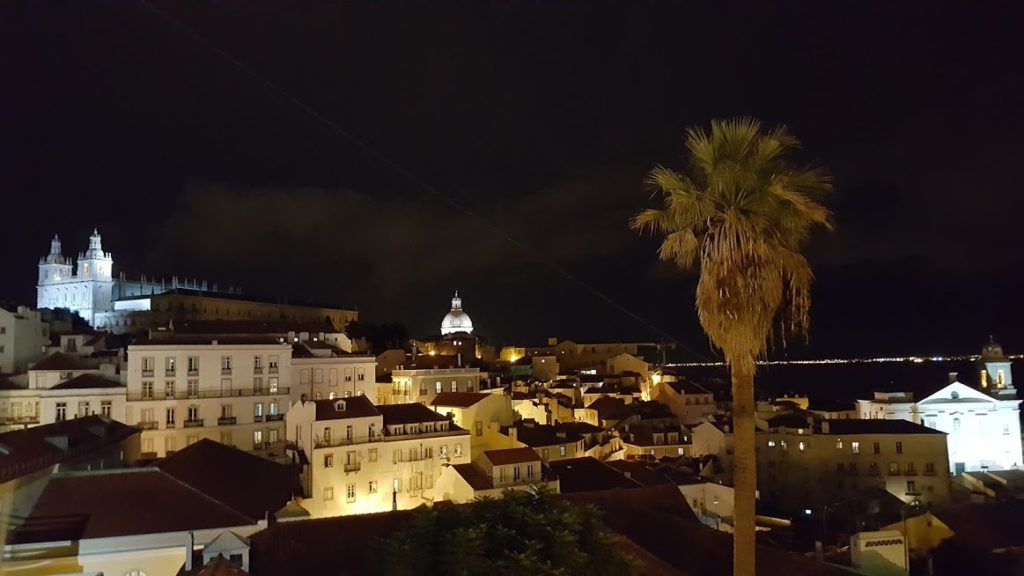
We ended our night by grabbing some coffee and pastry at Portos do Sol and enjoyed the view of the Alfama district at night. We then made our way towards the Santa Apolonia station and took the train back to our hotel.
We really enjoyed walking through the narrow streets of the Alfama and Graca neighborhoods. Yes, we got lost a couple of times but that’s part of the whole adventure. The highlight for us was definitely the view from Miradouro da Graca, but all in all, exploring the Alfama and Graca districts was a wonderful experience.
Day 2: Belem during the day | Bairro Alto at night
Part I – Belem

We started out earlier on our second day and visited the district of Belem. Belem is a must if you are visiting Lisbon. We took Bus 727 from Av. da República, which is about a 10 minute walk from our hotel (in the opposite direction of the train station). Another option is Bus 720 from R. Alves Redol. You could also take the train, taxi, or Uber. It took about 30 minutes to get to Belem on Bus 727.
We found this cute pizzeria – La Follia de Belem. La Follia has some of the best pizza I have ever tasted. We had an amazing conversation with the warm and friendly owner. If you are in the area, stop by and have a slice of pizza with a beer or glass of wine.
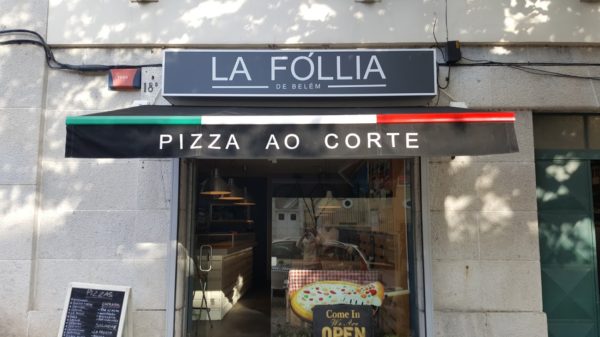
After lunch, we walked to the Jerónimos Monastery. This building is known for its grand architecture and its interior is just as spectacular.
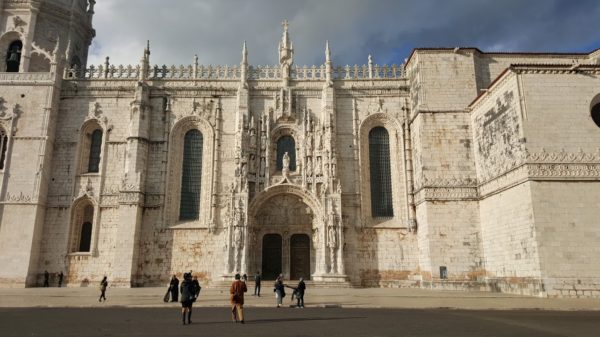
The Jerónimos Monastery is a UNESCO World Heritage site and has also been declared as a National Monument. You should definitely visit the Jerónimos Monastery when you are in Belem. It is a lovely building, plus there is no entry fee.
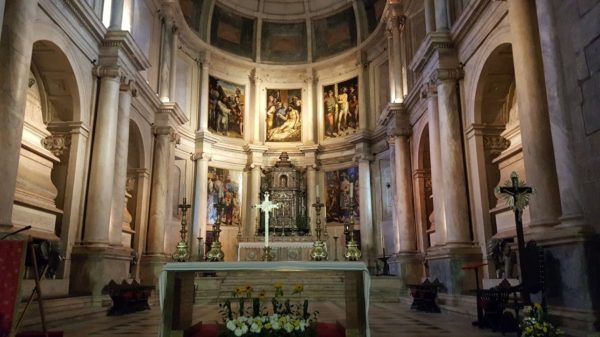
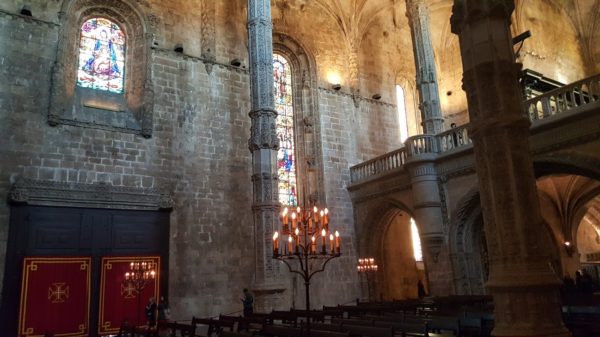
Once we finished exploring the Jerónimos Monastery, we took a walk around the fountain outside.

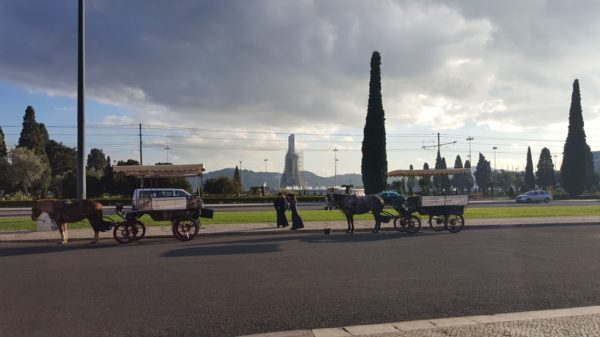
If you make a right and continue walking down the road, you will eventually find the Calouste Gulbenkian Planetarium. The Planetarium provides interesting information on cosmos and astronomy. However, we did not go inside because we wanted to make sure we had enough time to visit the Belem Tower.

The Belem Tower (Torré de Belém ) was built in the early 16th century in tribute to the city’s patron saint, Saint Vincent. It was constructed as a ceremonial gateway to Lisbon and as a defense system of the mouth of the Tagus river. The Tower also played a significant role in the Portuguese maritime discoveries and is now a UNESCO World Heritage Site.
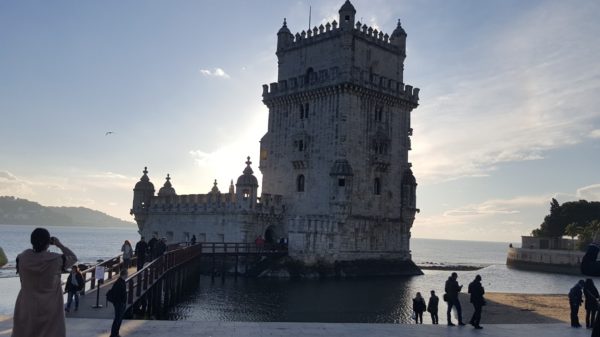
The Belem Tower is on the opposite street from the Jerónimos Monastery. It is a beautiful structure and is my favorite attraction in Belem. After taking several shots with the Belem tower in the background, we went inside to explore the tower. The entry fee is 6 euros (children 14 and under are free). The tower opens at 10 a.m. and closes at 6:30 p.m. (May-September)/5:30 p.m. (October-April).

The Belem Tower has many floors, with dungeons at the bottom and the tower on top. The views from the tower are spectacular. We enjoyed exploring each floor and learning more about the history of the Tower.
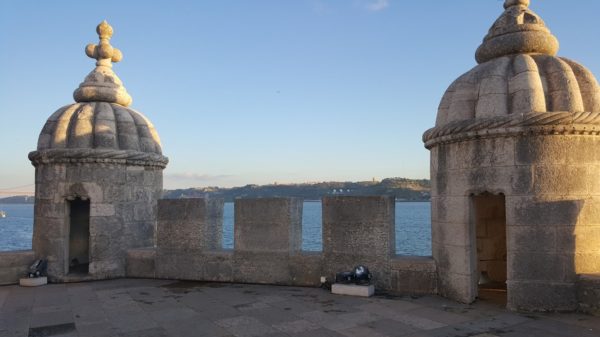



After exploring and enjoying the view from the Belem Tower, we decided to hang out in the area right outside. There was a small group of people singing and playing music, which set the tone for the evening. There were folks taking walks, playing with their dog, and simply enjoying the music. It was such a cool atmosphere. We felt right at home. Press play below to hear some of the music. The group is from Cape Verde.
We then walked over to the Monument of the Discoveries (Padrão dos Descobrimentos), which was built in 1960 to celebrate the Portuguese Age of Discovery. It is located on the northern bank of the Tagus river, just a stone’s throw from the Belem Tower. The Monument consists of 33 statues (16 on each side) to represent figures from the Age of Discovery. The statue of Henry the Navigator appears to be leading the other figures and makes the 34th statue.

The square in front of the Monument consists of a mosaic tile in the shape of a compass, which was a gift from the South African government. The Monument is directly across the street from the Jerónimos Monastery.
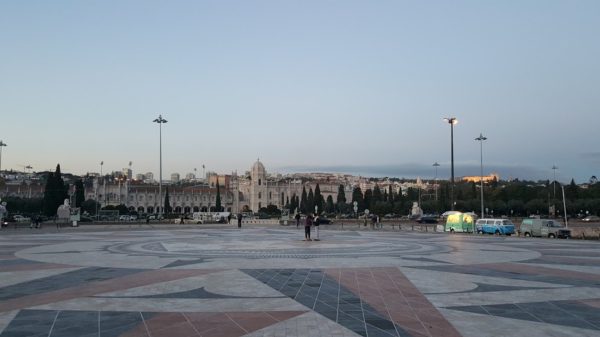
After viewing the Monument to the Discoveries, we decided to walk back to our bus stop and head back to our hotel. Our visit to Belem was nothing short of spectacular.
Part II – Barrios Alto
When we returned to out hotel, we showered and got ready to hit the town again. It was our anniversary so we wanted to have a nice dinner together and experience something different. We asked our taxi to take us to the best place to eat authentic Portuguese food and hear Fado. I emphasized that we wanted somewhere authentic, not fancy. He did not disappoint. He brought us to what seemed like a small hole in the wall restaurant in Barrios Alto – O Forcado, Restaurante Tipico.
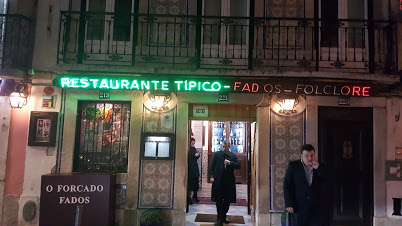
But inside was so much more. The interior of O Forcado is much larger than you would expect. There were so many people already dining and enjoying themselves. That was a good sign! We sat at our table for two and placed our order for dinner – just in time for the next Fado show.
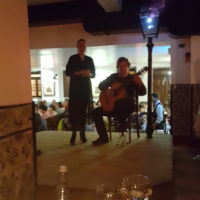
Fado is a traditional form of singing that originated in Lisbon, Portugal and dates back to the early 1820s. We had never heard Fado before and did not know what to expect. We heard a lot about it when we arrived in Lisbon so we wanted to experience it first-hand. Here is a sample (apologies for the dark video):
We enjoyed our dinner with Fado performances throughout the night. After a few songs and a traditional dance known as folclore, we decided to head back to our hotel.

This was a great way to spend our wedding anniversary (both day and night) and definitely an experience we would never forget!
I regret not going back to the Barrios Alto district before we left. It is a great place to experience Lisbon nightlife, with lively bars and popular restaurants. I would have loved to explore it more during the day. I hear Barrio Alto park is something to see.
Day 3: Day Trip to Sintra
When you travel to Lisbon a day trip to Sintra is a must! We had a fantastic time in this magical city. Read my post on our day trip to Sintra and see why.
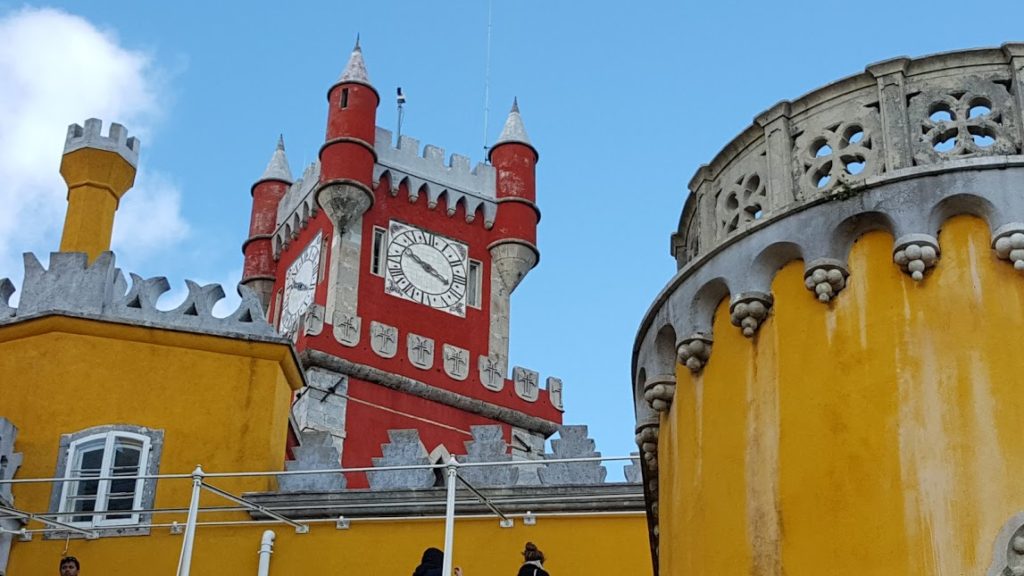
Day 4: Baixa District (Downtown Lisbon)
This was our last full day in Lisbon so we made the most of it by visiting the Baixa district (downtown Lisbon). We took the blue line metro from Marques de Pombal to the Terreiro do Paco station. You can also take the metro to the next stop, Baixa-Chiado. However, if you get off at the Terreiro do Paco stop, you can stroll along the Tagus river and enjoy the magnificent view.
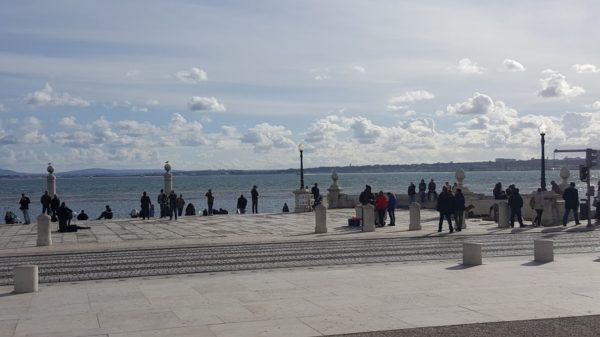
Praça do Comércio (Commerce Square)
Right across from the Tagus river is the Praça do Comércio. The statue of King Jose I is at the center of this grand square and you can’t miss the Arco da Rua Augusta behind the statue.

Rua Augusta
The Arco da Rua Augusta is the entrance to Rua Augusta, a major pedestrian street with many shops and restaurants. We strolled along the beautiful cobblestone street and absorbed the entire atmosphere of people walking and talking, vendors selling, and restaurant hosts enticing passersby to come in and enjoy a meal. This is definitely the heart of Lisbon. We stopped to have lunch at one of restaurants then continued exploring Rua Augusta and the surrounding streets.
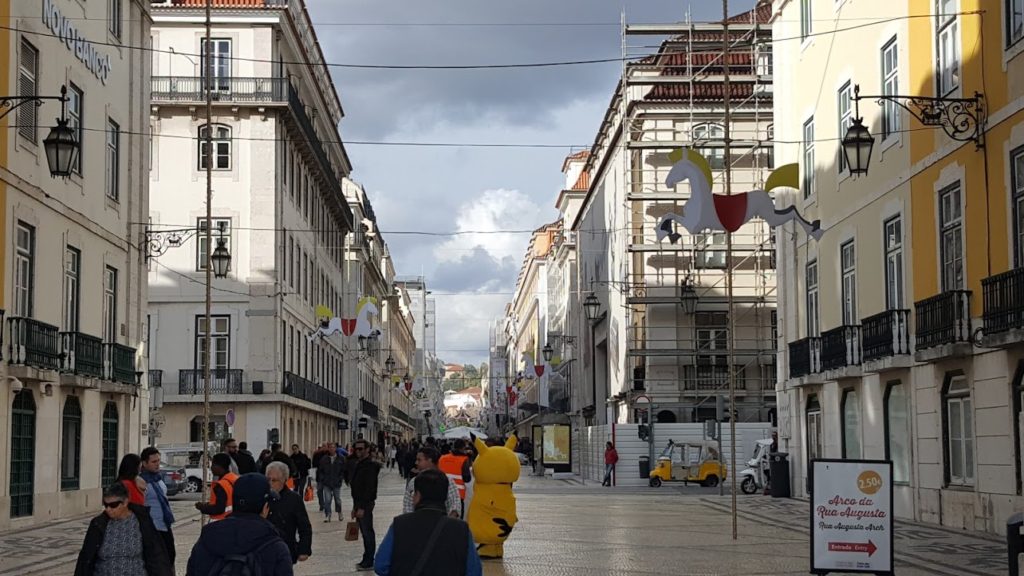
Elevador Santa Justa
After lunch, we found the Elevador Santa Justa, a lift that takes people from the Baixa district to Largo do Carmo (Carmo Square).
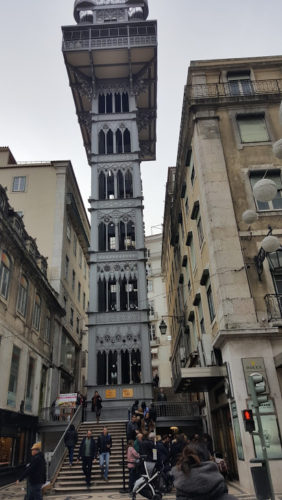
The 24-hour public transport ticket also covers a ride on the elevator because, technically, it is part of the public transportation system.
Tram 28
As we continued to explore the area, we saw the popular Tram 28 and decided to take a ride. Tram 28 goes through Lisbon in a loop, so you get to see all of Lisbon from the tram. However, you may not want to do that if you are pressed for time. Make sure you ask if the Tram is going in the direction of the Alfama district. Otherwise you will unintentionally loop all around the city. Also, be warned, this tram can get pretty crowded.
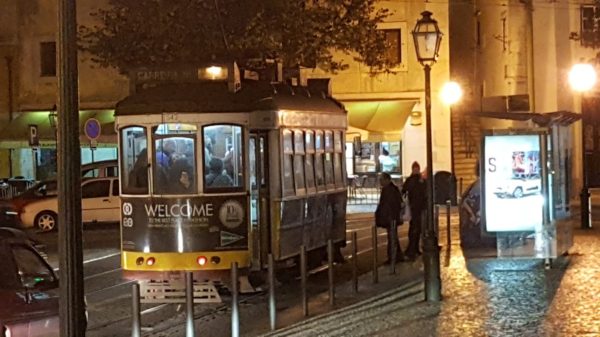
Souvenirs
As we strolled along, we realized that this was a great place to get our souvenirs. Lisbon is known for its tiles so we figured a set of tiles would be perfect. We got two tiles from a local vendor, one to represent Lisbon and the other to represent Sintra.
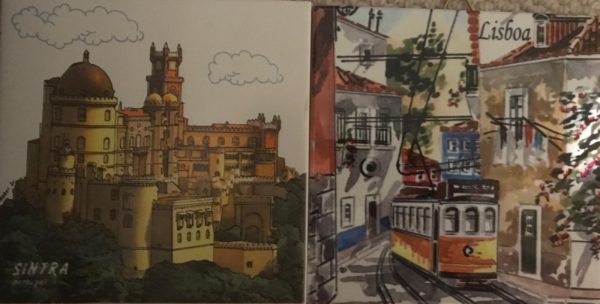
Rossio Square
We ended the night at Rossio Square, another main square in Lisbon surrounded by cafes, shops, bars, and restaurants.
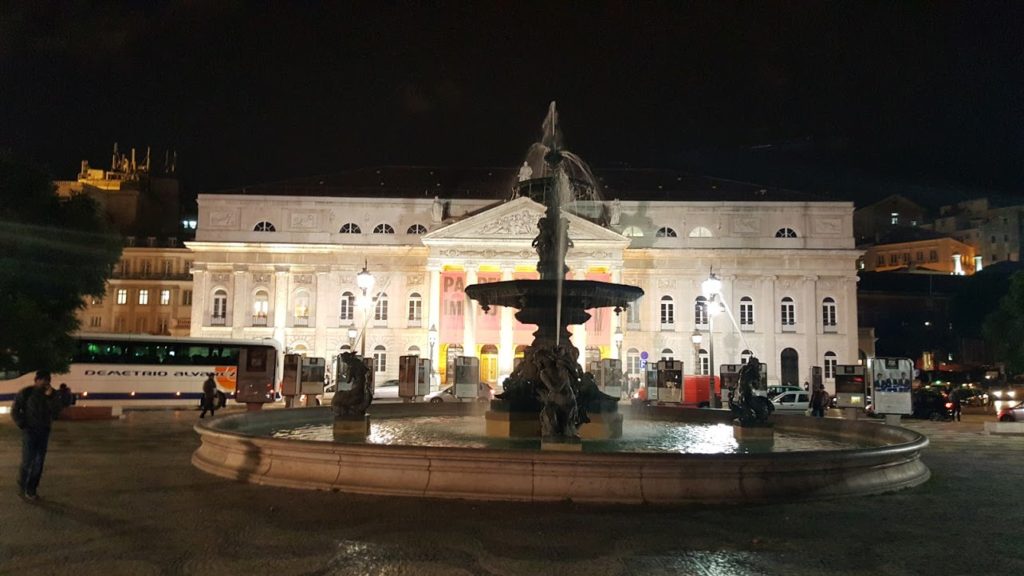
Make sure you see the Column of Pedro IV and have a drink at Cafe Nicola.
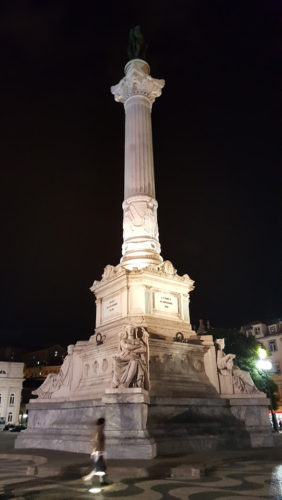
Another fun day in Lisbon. We basically spent the entire day downtown. We would do it all over again if we were there longer.
Day 5: Avenida da Liberdade
It was our very last day and we had a few hours until our flight. We decided to explore the surrounding neighborhood around our hotel. We started with the Avenida da Liberdade Boulevard, which is only a few minutes walk from our hotel. If you are into fashion you will love this street. The Avenida da Liberdade has several high-end designer shops so we did a lot of window-shopping as we strolled along. There are also trendy cafes, restaurants and bars around the Avenida da Liberdade area.
We grabbed some delicious pizza at Luzzo Pizzaria for lunch, then headed back to our hotel to grab our bags and take our Uber to the airport. This was an amazing trip and we were definitely sad to leave.

Lisbon is a wonderful city. I hope you visit Lisbon and use our experiences as a guide for your trip. Of course there is no particular order for the above itinerary. If you have less time, you can combine Days 1 and 4 as the Baixa and Alafama districts are close to each other. We definitely want to go back to Alafama, Graca, Baixa, and Belem, and will spend more time in the Bairro Alto and Chiada districts when we return.
What was my favorite thing about Lisbon? Probably everything! Our lively every day interactions and conversations with its friendly people; the ease of navigating around the city; the history; the culture; the tasty seafood; the beautiful buildings; the majestic views and the overall atmosphere. By the end of our trip we felt as if we lived there. It was our home away from home for 5 days.
Obrigado Lisbon! You are a gem! We will see you again.

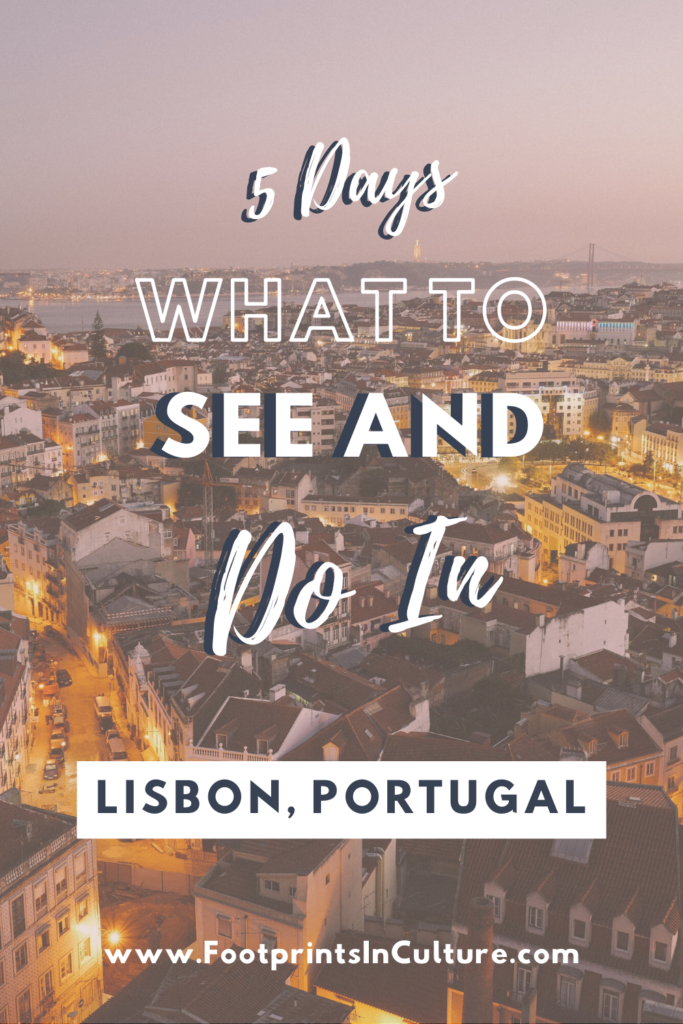
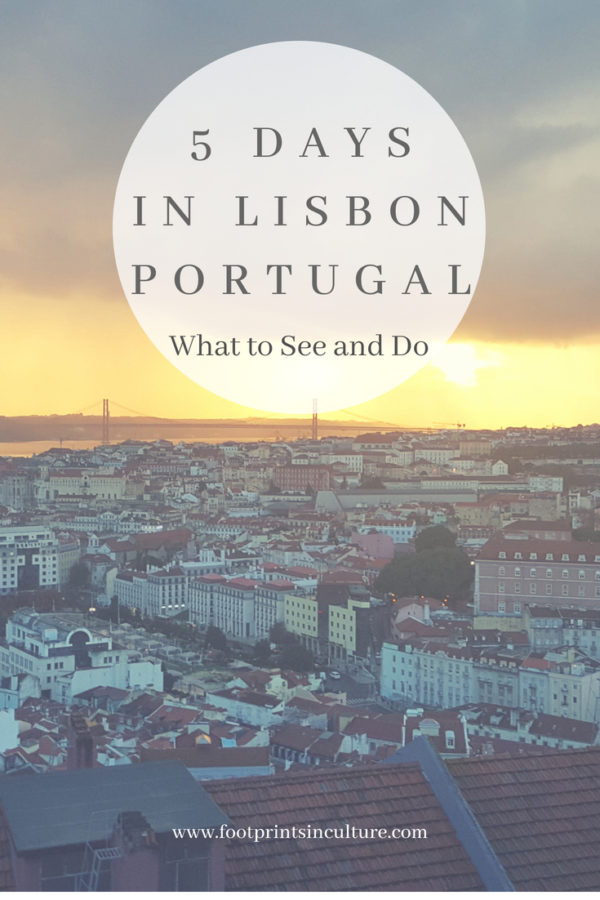
[…] we booked our tickets to Lisbon, Portugal, I immediately started planning our day trip to Sintra. Who could resist this enchanting city with […]
Pinning this for later, I can’t wait to get to Portugal! It’s a top 5 right now 🙂 looks amazing!
Awesome! If you do, please let me know if you find this post helpful for your trip. I hope you go, it’s an amazing city! Thanks for reading 🙂
[…] Trips and Travel Guides to get an idea of a planned itinerary. The New York, Savannah, Toronto, and Lisbon itineraries are great […]